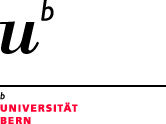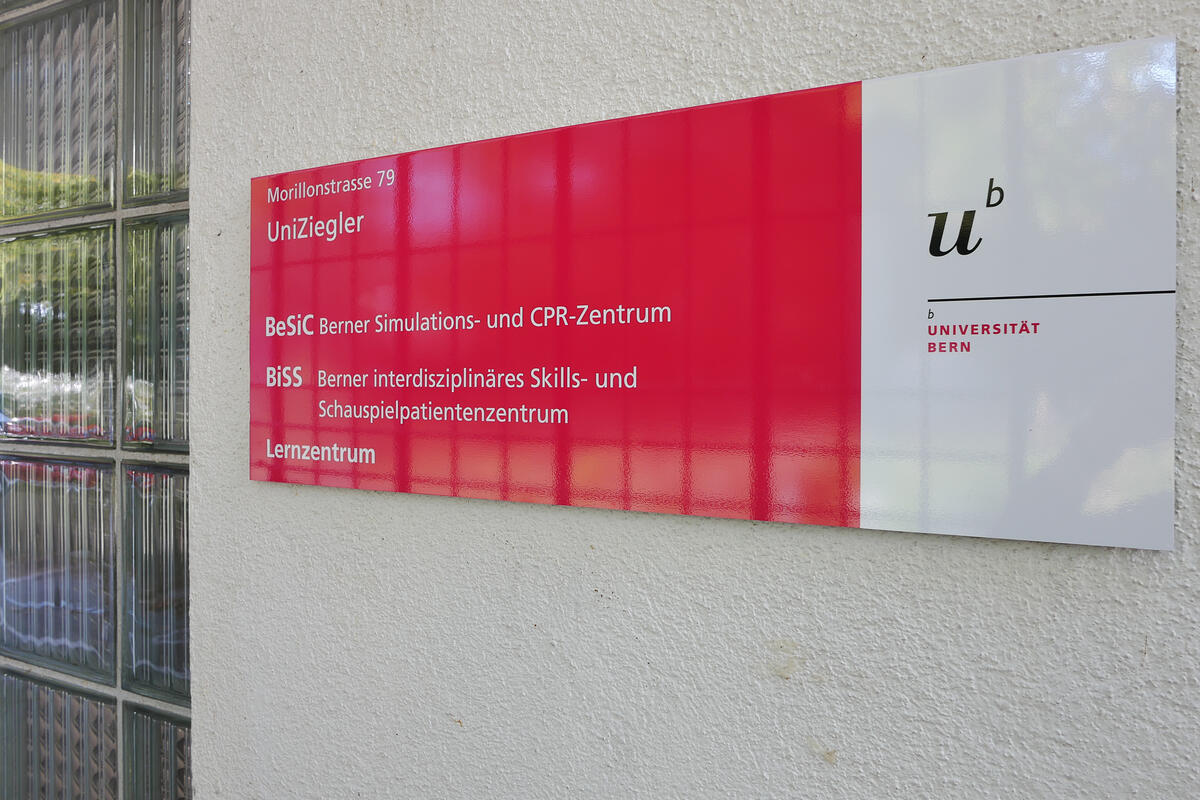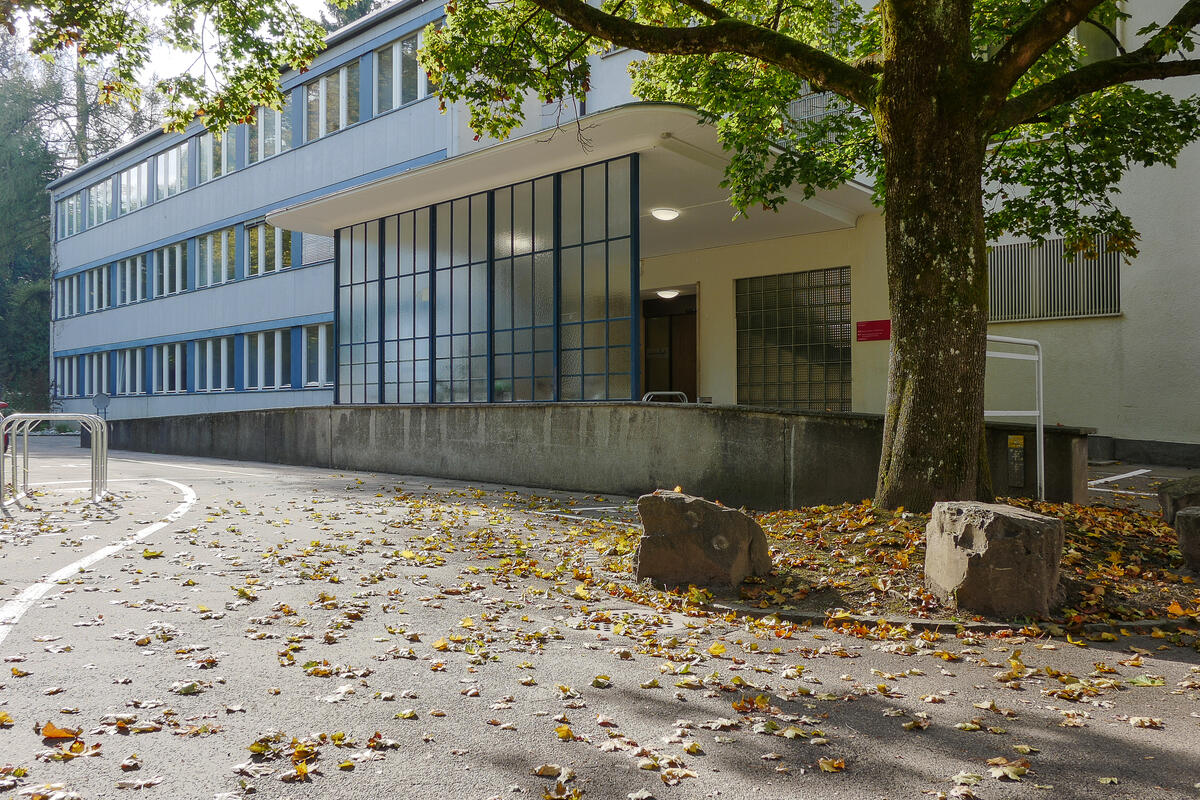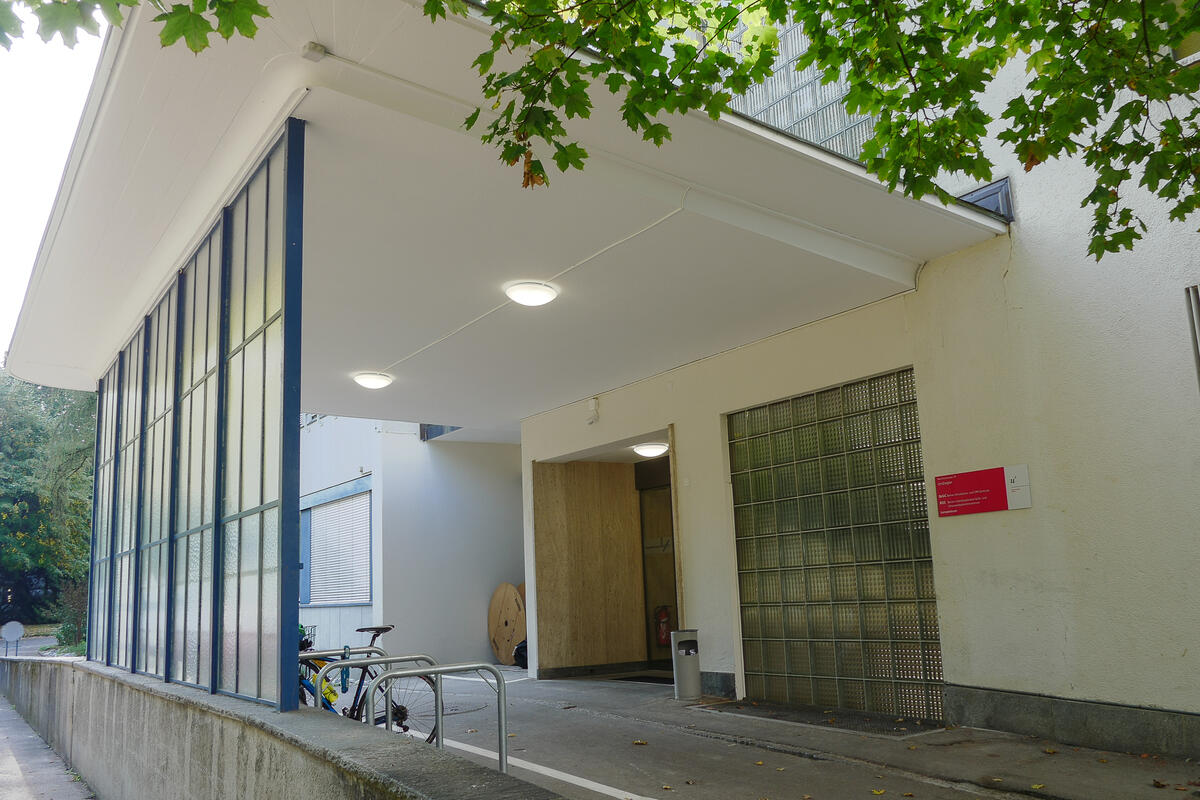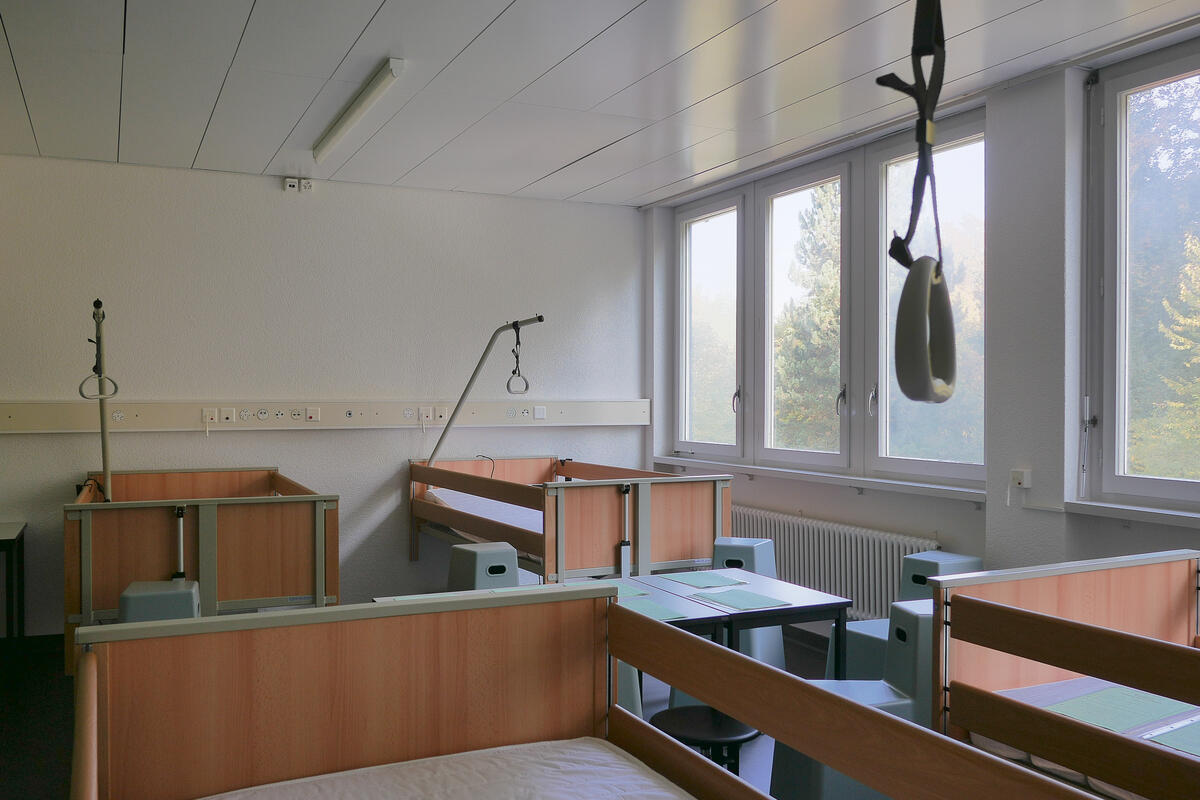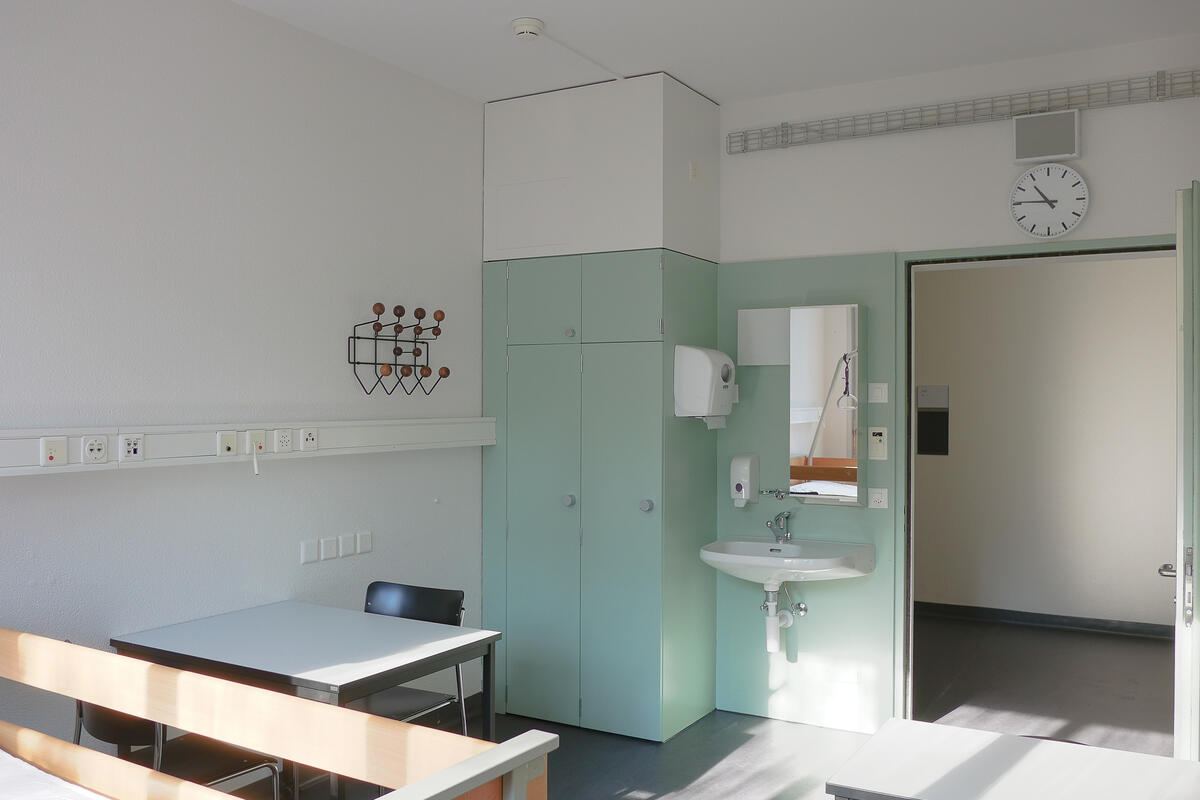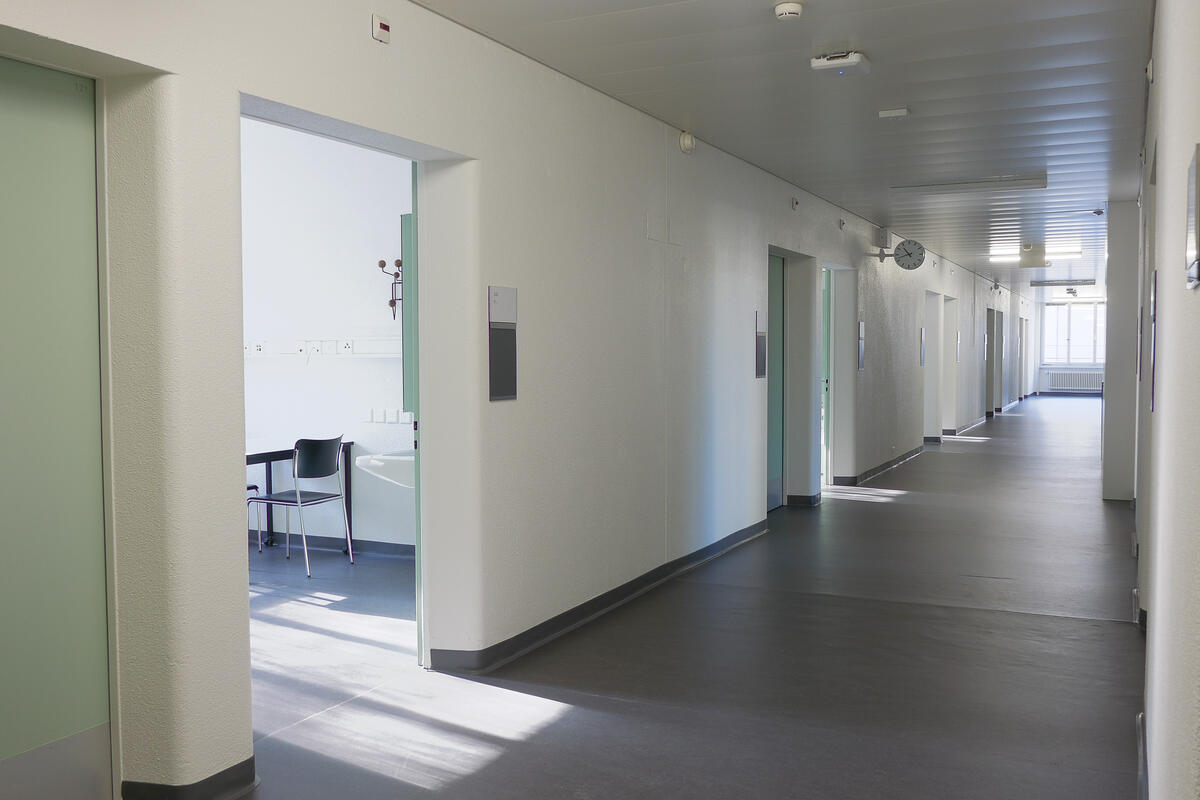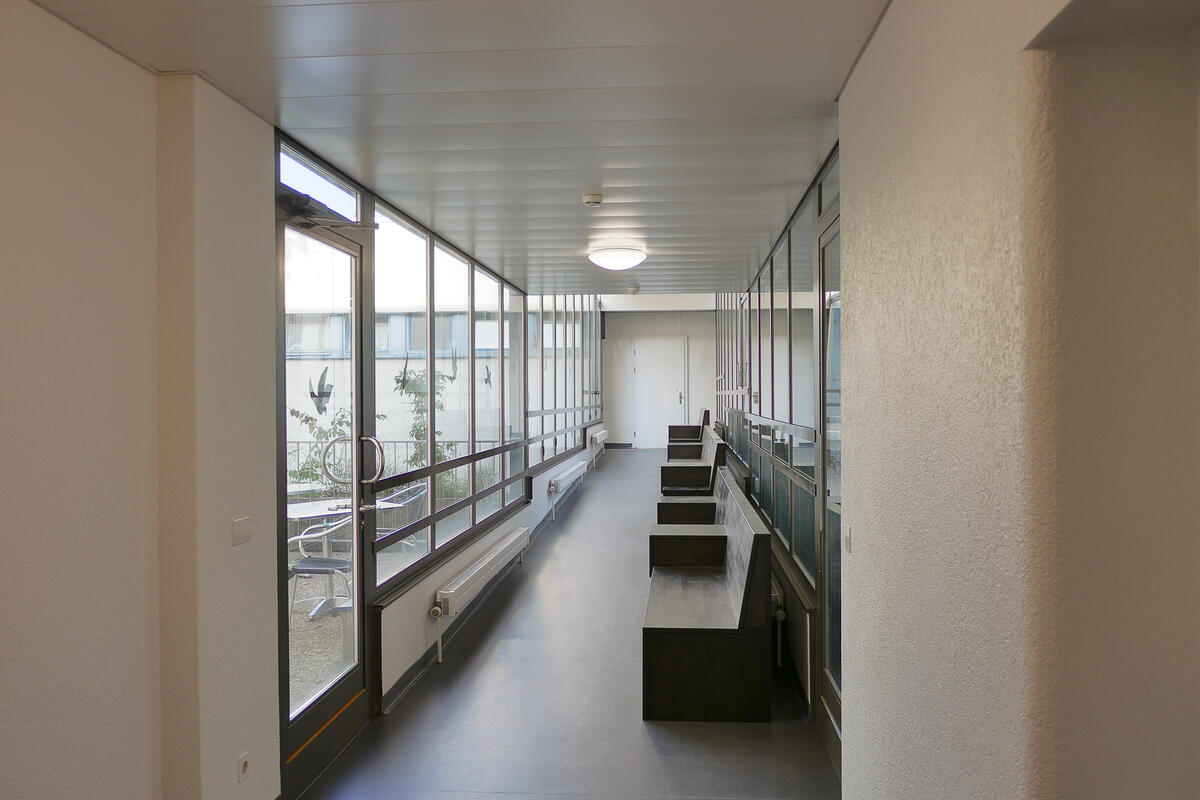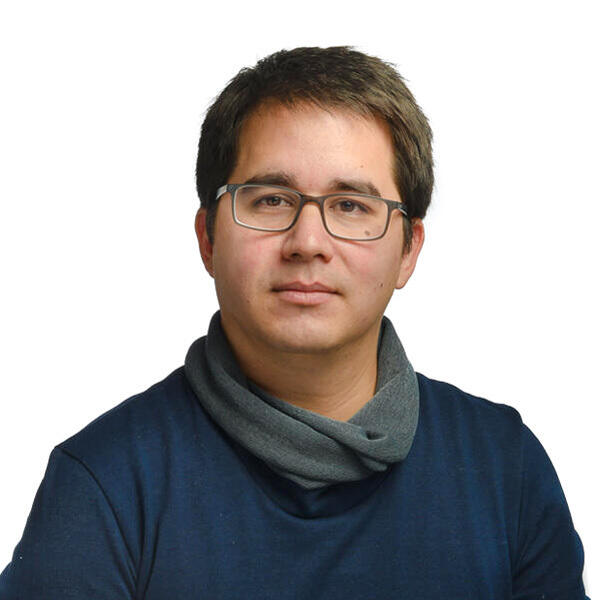The increase in the number of available places to study human medicine from 1st August 2018 was based on a resolution of the Executive Council of the Canton of Bern and the University of Bern. To ensure sufficient capacity for the teaching and examination of clinical skills, the BiSS relocated from the Insel campus to the new “UniZiegler” building, the former Renferhaus on the grounds of the former “Zieglerspital”. As it was originally built as a hospital, the structure of the new building lends itself very well to the training of future physicians.
A learning centre with group and individual learning stations supplements the offer for students of human medicine. The “Bern Simulation and CPR-Centre” BeSiC, which is also located in the UniZiegler building, is run by the Department of Anaesthesiology and Pain Medicine, and is oriented to specialist personnel in the area of acute and emergency medicine.
Logistical challenges
«Everything will be better in the Renferhaus», recalls Dr. med. Kai Schnabel, Head of the Department for Education and Media AUM, who will lead the BiSS and the learning centre on behalf of the faculty. «After the planning phase, everything suddenly had to happen really fast. The rooms had to be ready at the start of the Autumn semester, that was a real logistical challenge», he explains, emphasising the swift and active support from university and faculty institutions, but also his team at the AUM.
Learning, teaching and examining on three floors
The BiSS and the learning centre opened their doors just in time for the Autumn semester. The whole infrastructure for +100 students is in place and the results are clear to see. The BiSS, which stretches across three floors of the building, offers space for the practical teaching of clinical skills and communication in 42 former patient rooms. In addition to the standard furnishing, including monitors, whiteboards and cameras, all rooms are equipped with examination couches or hospital beds and with suitable simulators or models. The first teaching activities have already been implemented: Communication teaching with simulated patients is already successfully underway, as is the phlebotomy course (drawing blood and inserting venous catheters).
The craft work that is still pending ensues whenever there is no teaching taking place. «From January, clinical-practical examinations will also take place here, so we need to be 100% ready for action», says Marcel von Gunten, who oversees technical-administrative matters at the BiSS. The audiovisual system will then be completely operational for the first time, and for the duration of examinations, the learning centre on the ground floor will also be temporarily closed, which is otherwise open for students 24/7.
Scope for new offers
There is also a new course on offer: From this semester, students can learn how sonography is employed in emergency situations using the ultrasound unit. «It is gratifying to see that the students and lecturers have been so quick take up and utilise the opportunities provided by the BiSS»,sums up Kai Schnabel in a first interim assessment
